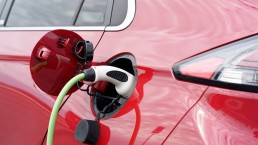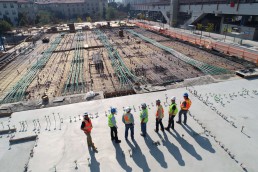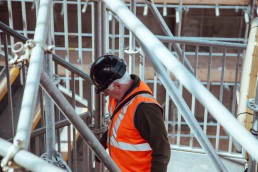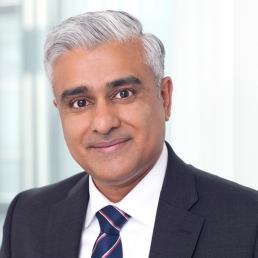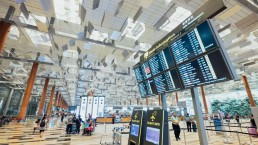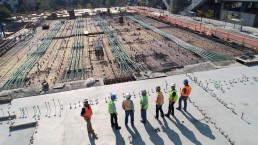Can charging supply keep pace with electric vehicle demand?
Net-zero carbon emissions by 2050…
Electric vehicles (EVs) are increasingly heralded by nations across the globe as a vital part of the net-zero transition to reduce emissions, and the key technology for decarbonising transportation, which accounts for 13% of emissions globally. But whilst vehicle sales have been booming in recent years, the installation of charging networks that underpin EV usage are trailing dangerously behind. The extent of this lag is particularly concerning in the United Kingdom (UK) where it poses a fundamental threat not just to the continued growth of the EV market, which by the end of 2023 is projected to be worth £16bn, but it threatens any plans for the UK to reach net zero carbon emissions by 2050.
A global EV boom driven by three central influences
Such has been the drive to increase the uptake of EVs, that global sales of Battery EVs (BEVs) and Plug-In Hybrid EVs (PHEV) doubled in 2021 from the previous year, and 2022 saw a +55% increase in global EV sales over ‘21. The registration of 10.5 million new vehicles in ’22 was despite component supply chain shortages and disruptions from the war in Ukraine that hampered output. With approximately 27 million EVs on the road today, they now account for a global market share of 13% of vehicles on the road.
What is clear is that as global consumers increasingly align their climate-driven values with vehicle purchasing, the number of EVs on the road will continue to rise exponentially. This is an ‘EV boom’ that has been accelerated by a combination of three central influences:
- Sustained governmental policy support, in the form of subsidies and incentives, pledges to phase out internal combustion engines (ICEs), and lofty electrification targets
- The rise in the availability and performance of EV models, which now gives consumers five times as many to choose from than in 2015
- Electrification of fleets by car manufacturers, in a race to meet rising consumer demand.

Showcasing the innovations and ideas behind EV market growth
The annual London EV show and conference, held at the end of November ‘22, is a platform where stakeholders from all three market influences gather to showcase the innovations and ideas that are spearheading the UK EV transition. With representation from the entire value chain, this year’s event included collaborations between government representatives, fleet management, charging systems & solutions providers, battery technology providers, major car manufacturers, and other influential stakeholders.
Attending the show provided me with a ‘peak-under-the-bonnet’ of the UK EV market and shed light on some of the key trends emerging in 2023 and beyond. Conference talks included those from industry leaders and leading research centres, amongst the latest vehicle innovations being showcased. These talks had one key common theme – that whilst a marketplace as dynamic as EVs offers great opportunity, commercially and in tackling climate change, capitalising effectively on these opportunities over the next few years will be fraught with challenge for the UK.
UK charging infrastructure is struggling to keep pace with the EV growth
The London EV show highlighted just how much the UK EV market has expanded in recent years in line with global growth, notching up an impressive 92% increase in EV registrations between January ‘21 and January ‘22.
UK charging, however, is still in its infancy relative to the vehicles it powers, and comparatively lags behind. There is a growing disparity between the growth rates of EV sales in the UK and charge point installations. This divergence threatens to impede the UK from meeting climate-goals set by the government and derail the feasibility of the UK’s ban on internal combustion engines (ICEs) that looms in 2030.
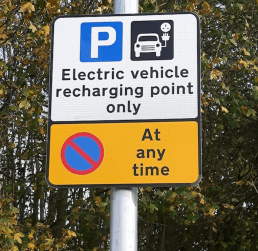
When you compare the absolute number of public charge point installations the UK needs to support the proposed transition, with current figures, it is clear there is still a long way to go. If the government’s 2022 charging infrastructure strategy successfully meets its ambition, by 2030 there should be over 300,000 public chargers installed nationwide. In comparison, as of January ‘23, there were cumulatively just 38,000 public charge points available across the UK.
More importantly, though, is considering the pace of charger installations relative to new EV registrations – which is slowing owing to the continued acceleration of new EV registrations. Since January ‘20, the cumulative number of EVs in the UK has increased 3.8X, whereas the number of charge points has increased just 2.6X. This increasing disparity is made ever clearer by the change in the UK’s EV-to-charge point ratio – a measure which helps assess the suitability of a nation’s charging network to support its vehicle’s needs.
As a benchmark, the Alternative Fuel Infrastructure Directive (AFID), an EU policy which regulates the deployment of public chargers, recommends a ratio of 10 EVs per public charge point for EU member states.
In 2016, the UK had a healthy ratio of approximately 8 EVs per charge point. Comparatively, the UK now has the 9th worst global ratio of 21 EVs per public charge point. There are evidently key lessons to be learned from the likes of South Korea, the global leader which boasts a ratio of just 2.6.
Unlocking mass adoption with public charging infrastructure
The vehicle-to-charger gap poses a fundamental problem to the mass adoption of EVs in the UK, for two main reasons. Firstly, on average, 30% of UK households lack off-street parking for residential charging. This figure rises to around 40% across major UK cities, and as high as 50% in London. These households will therefore have to rely on the public charging network – either off-street slow, charging, or nearby fast/rapid charging hubs – to charge their vehicles at home.
This scenario works, provided there are enough charge points to accommodate users. However, too few chargers pose a major barrier for drivers switching over from ICEs, who will view EVs as impractical until there is somewhere suitably convenient to charge them.
When Which? surveyed 1.5k electric car owners, nearly half said that their nearest public chargers were over a 20-minute walk away.
Not exactly convenient.
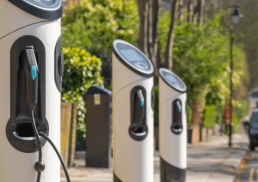
The logic is the same looking across the UK’s charging network for longer journeys. For true mass adoption, there needs to be enough charge points to make charging your vehicle battery as convenient as filling up with fuel currently.
Speak to any EV owner in the UK, however, and they will tell you of the growing issues around public charging: long queues, a myriad of payment systems and apps to contend with for different charge-point-operators, and chargers which simply don’t work (experienced by 4 in 10 customers of public EV chargers).
This is not conducive to convincing the masses to switch from ICE vehicles to the more sustainable option of electric.
These issues with the charging infrastructure will continue to exacerbate as drivers become increasingly reliant on public chargers, versus at home or work, the more that make the switch to EVs. The UK urgently needs to accelerate its plans for large-scale installations across the public charging network, which is so far failing to deliver the c.100 installations per day needed until 2030 – last month (Jan ’23) just 28 charging devices were installed per day. A large-scale programme such as this requires a unified drive from all stakeholders.
As demand and supply continue to fall out of balance, this situation presents opportunities for private investment in the expansion of the charging networks. The current EV charge point operator market is highly fragmented and lacks a ‘gold-standard’ of consumer vehicle charging. There is a clear market need that so far appears unfulfilled in both availability and quality.
Whilst there are a multitude of other challenges that must be addressed, such as ensuring a sufficient supply of electricity to meet charging demands, each of these challenges offers their own commercial opportunities.
For those considering entering or expanding within the space, now is the time to answer the key strategic questions – what is the ‘Size of the Prize’ available? Which of the current barriers-to-adoption offer the greatest opportunities if addressed effectively, and how can that value be harnessed?
Milo Eadie
Milo is a strategist and transformation consultant with experience across capital projects, electric vehicle fleets and charging infrastructure, and product development. He began his career as a design engineer in the nuclear industry, where he consulted on the UK's fleet of reactors.
His expertise includes business strategy, data-driven decision making, productivity optimisation, and applied innovation and implementation. He is passionate about combining these skills to support clients in achieving their Net-Zero ambitions.
Milo is a Master of Engineering (MEng, Hons) from the UK’s leading General Engineering course at the University of Bristol, where he gained specialisms in Sustainability, Project Management and Entrepreneurship.
CONTACT US TO FIND OUT HOW WE CAN HELP
Delivering greater procurement efficiencies for a construction company
The issue
- £1billion division split into 6 semi-autonomous business units, spending £450m per annum on materials and sub-contracted services
- Each business unit under revenue and margin pressure especially those dependant on public sector work
- By re-establishing good procurement practices a modest 3% savings target was agreed upon, the stretch being that the full cash saving had to be delivered in-year
- No single picture of procurement spend or performance compared to the external market
- Procurement & supply chain savings were already baked into business unit budgets and there was pressure from plc to deliver over and above this
Solution
- Created a definitive ‘spend cube’ and with it a single set of numbers
- Completed a top-down and bottom-up analysis of spend at the detailed category/supplier level and agreed impactable spend
- Created and executed a prioritised implementation plan closely monitoring and recording the benefits as they are realised
- Redesigned the P&SC organisation bringing in the necessary skills and expertise as required
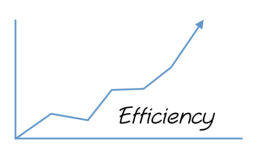
The results
- In-year cash savings of £8million with an exit run rate of £10million per annum
- New operating model fully installed and driving benefits (sustainability)
- Benefits fully traceable within business unit P&L
An award-winning team











CONTACT US TO FIND OUT HOW WE CAN HELP
Infrastructure after Covid-19 – when the mould is broken where do you want to be?
Competition or collaboration? Navigating change in infrastructure after Covid-19
The Covid-19 pandemic has brought about rapid unprecedented change. Companies have responded to imposed restrictions, people have adapted to new ways of working, and the impact on the economy, employment and productivity has been immense.
Businesses face an ever-shifting timescale for recovery but uncertainty on how they need to adapt in the short, medium and longer term.
A commitment to investment in infrastructure
With uncertainty over the shape of economic recovery, the UK government is under increasing pressure to provide answers. The current political agenda is balancing the risk of further outbreaks against the need to kick-start the economy and get people back to work. Infrastructure is a key part of this recovery plan.
As such, we are seeing a range of statements, commitments and emerging policies that::
- Commit to accelerated investment in infrastructure
- Criticise past failings in the delivery of major programmes which have taken too long and cost too much
- Question how other countries can do it so much better than us
- Recognise that we have developed a huge burden of bureaucratic processes
- Challenge the slow adoption of new technologies and innovation
- Reinforce previous goals on climate change and the environment
What does this mean for core infrastructure and regulated industries?
The services and facilities provided by infrastructure and regulated industries are essential to the future growth of the economy. The challenge is how to fairly manage the cost of recovery, which will ultimately be passed onto the consumer. This creates further pressure on the whole system including clients and service providers. Some key questions and considerations include:
For Clients (or sponsors)
- With greater pressure on household budgets, customer expectations on service and value will increase
- Customers will be less tolerant of failure and companies will be under greater scrutiny
- Social and environmental conscience is increasing
- As a result of COVID-19 there will be sustained change in the way people work. But is the full impact fully understood?
- Clients or sponsors will be under increased pressure from the regulators to deliver more for less
- Continuing to stretch existing resources and deliver incremental change will not be enough
- Companies will be driven to develop different and more efficient operating models
For Service Providers
- No longer contractors or consultants but “Service Providers”
- Has traditional contracting had its day and does it really deliver what clients and customers are ultimately looking for?
- Service Providers will be under the greatest pressure to address the higher-level challenges through creating new ways of working or new service offerings
- “Necessity is the mother of invention” – the time of greatest need will drive the greatest change and the more agile companies will be those that win
- Traditional contracts delivered in a traditional way will become an increasing “race to the bottom” based on price with associated increase in failure
Innovation and technology inevitably has a major part to play in addressing the above.
What part should Innovation and Technology play?
Regulated industries are notoriously slow adopters. If this is to change, it is essential to understand the reasons why and break these paradigms.
- Risk of failure is too high either in terms of impact on customers or regulatory action
- Procurement processes are cumbersome and often preclude SMEs/Start-ups
- In reality, Intellectual Property has a very short shelf-life, products are quickly copied
- There is more to be gained from running faster and letting others follow compared to standing still and protecting what you have got
With many organisations facing the same challenges, is there something to be learned from collaboration?
Competition or Collaboration?
Regulation has often been based on the premise of driving or simulating competition. So, what delivers the greatest benefit – organisations collaborating or competing? Many “alliance” delivery models are based on the benefits of collaboration which raises a number of questions:
- Regulated utilities by their nature are often monopolies so why isn’t there far greater collaboration and sharing of ideas?
- Technology/Innovation start-ups often have to prove their concepts several times over to separate clients passing through individual tortuous procurement routes. As a result many collapse before they start. As a wider industry why do separate companies re-invent the same wheel
- Contractors/Service Providers provide similar services to different clients and sectors in the same geographic area. Is there more to be gained from a common approach across sectors?
- If the same Service Provider is providing a service across multiple clients and sectors who is the regulator actually regulating – the Client or The Service Provider?
- If the end service across sectors is a similar service why should there be different regulatory models and different regulatory measures or even different regulators?
Acceleration, adaption and adoption
The COVID-19 pandemic has had an undeniable impact on organisations. Businesses have been forced to adopt a more radical and agile approach in how they adapt to change.
This unprecedented challenge has also created opportunities. Many businesses have failed but some have flourished. In the main, these organisations have embraced a culture of learning from others. They have collaborated and openly shared resources. They have undertaken the accelerated development of complex solutions and executed them with simplicity.
Going forward, significant commitments have been made, expectations are high and pressure on delivery will increase. The challenges will necessitate change and those that move fastest stand to gain the most.
The authors
Get in touch
We help infrastructure organisations to meet challenging targets through strategy, operating model design and transformation.
Contact us to discuss how we can help your organisation.
Want to find out more or meet one of our Infrastructure team? Contact us by email, phone or our web form.
Digital productivity management in infrastructure
The full package: digitising productivity management in infrastructure delivery
Infrastructure owners and construction companies are selecting or developing, and then seeking accelerated implementation and scaling of, their preferred digital productivity management tool(s).
In consideration of the current economic climate, the critical role that Infrastructure investment is set to play in boosting growth has been amplified.
In light of these two factors, it does not feel as though there could be a better time to suggest that if we are going to do the whole ‘digital productivity thing’ in infrastructure and construction… we should do it properly. So, what does ‘doing it properly’ mean? It means that it is time to assess the full spectrum of construction-site productivity management capability areas that can be enhanced through the new or improved application of digital tools. We need the full package.
Unlocking greater efficiencies through digital
Digital enablement has revolutionised productivity and the definition of efficiency norms in other industries. Most notably in Manufacturing industries such as Fast-moving consumer goods (FMCG) where market leaders such as Unilever have reduced material factory waste by more than 40% by digitally enabling end-to-end quality management. (Source: World Economic Forum, How manufacturing can thrive in a digital world and lead a sustainable revolution, January 2020)
Similarly, by 2025 the digital enablement of Logistics has the potential to reduce global carbon emissions by 11%. (Source: World Economic Forum, Digital Transformation of Industries Demystifying Digital and Securing $100 Trillion for Society and Industry by 2025, January 2016) A powerful endorsement of advanced productivity management tools.
The Agriculture industry presents further evidence. Here, as an example, data gathering and historical analysis data-driven decision-making tools are having a transformative impact on crop productivity.
Productivity management in infrastructure however is often driven by manual cost and performance benchmarking processes. Some efficiency gains have been achieved through the successful adoption of Lean methodologies. But the meaningful use of digital tools that enable higher productivity rates will be key to unlocking much greater efficiencies in the construction phases of infrastructure programmes.
There is an entire spectrum of construction site productivity management capability areas that can be enhanced through the application of digital tools. These can be broadly placed into three categories:
- Planning and Collaboration: Ensuring the feasibility of planned activities and improving communications between the site and site-office
- Data gathering: Gathering data on the work accomplished on-site to feed performance/progress metrics
- Data-driven analytics: Collecting historical productivity data on-site to feed data-driven decision making
In pursuit of significant improvement
Organisations tend to focus on the independent application of a discrete digital tool to enable productivity. Most often this means dedicating themselves to a data gathering tool for the purpose of productivity tracking. However, in the pursuit of significant efficiencies it is not sufficient to introduce digitally enabled capability to just one area of the productivity management spectrum. For infrastructure delivery, at the construction site level, a suite of digital tools covering the full range of capabilities (outlined at a high level by the three categories above) is required. Many of the more recently developed tools incorporate data as a service (DaaS) offerings but there is the opportunity to go further. Attributes for productivity information gathered, processed and analysed should adhere to the standards set by data and information frameworks being built by infrastructure owners.
For data generated by any suite of tools, there is the opportunity to actively inform cost and performance benchmarks and subsequently productivity norms for the delivery of work. This applies within the integrated environment for information that programmes, alliances or organisation level data frameworks house.
So how to decide on which digital productivity management tools to work with?
Whether through in-house development or accessing solutions already in play, several factors should be considered, including but certainly not limited to:
- Ease of implementation
- Supply chain buy-in
- Scalability across multiple construction disciplines
Prioritisation frameworks can be designed and applied to rapidly assess an entire landscape of digital productivity management solutions, thoroughly reviewing each through the lenses of standard attributes.
Digital productivity done properly
Individual tools applied in isolation in areas such as productivity tracking can offer benefits. But there is an entire spectrum of on-site productivity management capability that can be enhanced through the application of digital tools. These benefits can be amplified through alignment with the principles for data defined by information frameworks being developed by infrastructure owners. Other industries are demonstrating the scale of productivity benefits available through digital enablement. These are most notable where a complete end-to-end process approach is adopted.
So, if we are going to do the whole ‘digital productivity thing’ in infrastructure and construction… we should do it properly.
The authors
How we can help: Rapid Digital Portfolio Prioritisation
Siloed innovation, functional misalignment and data ‘doing its own thing’ are just a few challenging features of the current congested-frontier of digital transformation.
Applying our bespoke prioritisation framework(s), Curzon Consulting takes 4-6 weeks to rapidly assess an organisation’s entire landscape of digital solutions and initiatives. We thoroughly review each through the lenses of attributes that are orientated around features such as financial benefit, scalability and interoperability.
Get in touch to find out how we can help or arrange a free virtual meeting with award-winning Principal consultant, Edem Eno-Amooquaye.
Want to find out more or meet one of our Infrastructure team? Contact us by email, phone or our web form.
Digitalisation in building supplies
The global COVID-19 pandemic is changing customer behaviour across the UK. We explore the digitalisation adopted by many building supplies companies to meet new customer expectations.
Muhammad Ali, Curzon Consulting Principal, discusses the impact of coronavirus on customer expectations and digitalisation with David Young, Group CEO of The Bradfords Group. Bradfords is a leading independent Builders Merchants in the UK.
Watch the highlights of our conversation:
Changing customer expectations
Navigating supply and demand challenges brought about by COVID-19
David explains the challenges that the pandemic has created in the building supplies industry.
Initially, Bradfords’ shops remained open to support essential projects and self-employed customers. In March, the morning after the UK lockdown was announced, Bradfords experienced extraordinary levels of demand. They realised that although Bradfords had a number of social distancing measures in place, they wanted to create a new process to safely meet the rapid change in customer demand. They opened back up the next morning with a brand new process – to order either via phone and collect, or order through the website.
This generated “unprecedented demand on the phones”, increasing from around 1,500 calls per day to 15,000. Consequently, both trade and retail customers looked to other channels such as the website. David explains
“we started seeing a big uptick in our trade customers using our portal and then transacting online, and also retail customers”.
However this surge in online demand came with a new set of supply chain challenges. Therefore, to ensure that Bradfords could continue to supply products for essential products and key projects they:
- Temporarily closed their business to the retail customer base
- Rationalised their product range
Furthermore, showcasing fewer products created a better website user experience which in turn generated an increase in sales. In fact, the eCommerce sales are still increasing, even now Bradfords have reopened their shops and yard to customers.
Are these changes in customer behaviour expected to continue?
In the short to medium term, this changing end user behaviour is expected to continue. Trends include:
- Customers increasingly plan ahead
- Customers continue to buy online
- An increase in retail customers
- A spread of footfall across the day, rather than a concentration of customers in the morning
“What COVID-19 has forced customers to do is plan ahead” David Young explains. Due to extended lead times and the click & collect service, Bradfords have seen their customers become much more planned. This change in behaviour is also helping operations “it helps us manage our workloads and forecasting stock levels”.
Building a strong ecommerce offering
The growing focus on ecommerce in building products is mirrored in the wider UK retail market and high street. Companies like Bradfords have been “through a long journey on ecommerce” and now find themselves well positioned to generate new sales through this channel. This represents a shift in focus for the building materials industry. A renewed focus on driving sales through the website highlights the importance of understanding insights from data. David recognises that good data is an important investment and Bradfords work closely with suppliers to ensure they are capturing data.
Overall, the pandemic has led to a renewed focus on digital strategy.
“I think the pandemic has really forced people and businesses to really look at their digital platforms”.
What does the future of trade counter operations look like?
Digitalisation in building supplies merchants during coronavirus has caused a spread in footfall across the day in shops. David forsees that click and collect will become a bigger part of building merchant life, likely as a separate service. Offering click and collect on light and heavy side products, such as forklifts, will require companies to restructure the way they operate. Key considerations are:
- Resource to ensure they can offer customers quick turnaround time
- Speed and efficiency of processes
- Omni channel offering
- Flexibility around opening hours – digitalisation opens up a 24 hour service
- Product ranges
The ability to react quickly to meet changing demand is key, both within the business and across the supply chain. Indeed, David recognises the importance of planning ahead and sees the importance of builders merchants becoming “much more productive in the future”.
Changing relationships across the supply chain
Will digitalisation disrupt the value chain? Does it change the relationship between manufacturer, distributor and end user?
David sees this as an evolution rather than disruption:
“I think the relationship between the merchant, and the supplier will change dramatically. You know data is so important and historically I’ve found that data within our supply chain is very poor… a lot of manufacturers just don’t hold the level of data needed in this new world…
I think there’s a big wakeup call coming”.
Merchants need to be mindful of potential risks, particularly if they:
- Are slow to react to digital customer demand and develop their eCommerce platforms
- Don’t react quickly – “actually some of the suppliers will vertically integrate and sell direct and cut us out.”
This evolution also presents a number of opportunities for building supplies merchants to:
- Work with suppliers that are invested in data and technology
- Build stronger vendor relationships
- Attract a new demographic of customer
- Understand the many payment platforms and react accordingly
In summary, digitalisation across building supplies gives businesses the opportunity to adopt digital, improve customer experience and improve supply chain relationships.
Contact us
Contact us to discuss how digital strategy, transformation and customer experience can be applied in your organisation.
We can help your organisation with digital strategy, transformation and customer experience.
Want to find out how our Industry & Energy Services consulting team can help?
Mental health and COVID-19: a clinician's perspective
The global COVID-19 pandemic has highlighted new and existing challenges around mental health care. One in four adults experience mental illness, (NHS England) and many more of us know and care for people who do. For many, the COVID-19 pandemic has created anxiety which is a normal response to uncertainty (WHO, 2020).
In his latest conversation, Chetan Trivedi discuss the impact of coronavirus on mental health with Dr Tarun Gupta, a General Practitioner and Occupational Health Physician based in the UK.
The impact of coronavirus on mental health
In our first video interview we explored the impact of COVID-19 on mental health. Dr. Gupta shared examples of what he is witnessing on the ground.
The impact of technology on mental health
In our second short video we discuss the impact of technology in healthcare generally, how technology plays a role in supporting patients with mental health conditions, and some of the limitations of technology.
Prevention, assessment and treatment
In our final segment, Dr. Gupta answers the question… if he was appointed Mental Health Tsar, how would he address mental health care in the UK?
Useful resources
- World Health Organisation mental health guidance
- NHS Mental Health and Wellbeing homepage
Contact us for more information or submit a request for proposal to our healthcare consulting team
The convergence of healthcare and travel
Airports and the wider transportation industry are facing a number of new challenges as they prepare for the realities of a post COVID-19 world.
Aviation and mass transit are dependent on density, the antithesis of social distancing. John Holland-Kaye, CEO, Heathrow Airport recently stated “It’s just physically impossible to socially distance with any volume of passengers in an airport.” He continued “The constraint is not about how many people you can fit on a plane; it will be how many people you can get through an airport safely”.
To address these constraints, many airports are considering how to adapt their existing operating models for the new reality and adhere to any new health and safety regulations.
What could the future of airports look like?
Already many airports, including those based in the UK, have introduced measures to enable essential travel based on government guidelines. Those guidelines include social distancing, ample distribution of hand sanitiser throughout airports and efforts to spread passengers evenly across terminals.
However, such measures may not be as easily implemented when capacity is ramped up towards pre COVID- 19 levels and therefore innovative and creative methods will be needed to help increase passenger confidence and change the narrative. Passenger confidence will be the key driver to getting back to some level of normality!
Accelerated automation across the customer journey
The passenger journey is changing. Post COVID-19, passengers may welcome the acceleration of automation across commercial aviation and urban mobility in order to limit physical contact.
A new era of automation is likely to extend from the basic such as the eradication of all remaining doors requiring pushing or pulling to the more advanced. These might include gesture or eye-movement-based interactions with payment kiosks and in-flight entertainment screens; robots and drones equipped with UV lights that continuously sanitize surfaces; and artificial intelligences that govern our previously clumsy attempts at everything from bus scheduling and curb usage to security screening and aircraft boarding.
We spoke with one passenger experience company, Elenium Automation, who are trialling ‘touchless travel’ technology. Etihad Airways recently announced that it plans to partner with Elenium Automation to trial new technology which allows self-service devices at airports. The technology will be used to help identify passengers with medical conditions, potentially including the early stages of COVID-19. Watch our interview with Elenium Automation here.
The new customer journey requires process optimisation and staff upskilling to ensure new regulations are complied with and the spread of viruses are mitigated.
The convergence of healthcare and aviation
Airports in Asia are one step ahead, having learnt from their experience dealing with SARS. For example, the Airport Authority Hong Kong are in the process of rolling out new measures that include the following:
- Full body disinfection channels
- Antimicrobial coatings
- Autonomous cleaning robots working 24/7
Bournemouth Airport are currently trialling thermal cameras in order to detect if passengers have fevers or other indications of disease. Airline passengers would simply walk through a series of tunnels, gardens, or other environments designed around new biometric-enabled security screening methodologies—without ever touching anything or even producing passports or other documents.
Identification through temperature monitoring then is likely to funnel through to more rigorous and accurate healthcare assessment. Technology is simply the enabler. This flow through process needs to be designed, procured for and integrated into the overall operating model, which will require retraining of airport employees, third-party contracting staff, process and system changes.
Service based offering
Less footfall simply means less custom, just as it does on any high street. In addition to less footfall, customers may be less willing to browse, and there may be capacity constraints in entering retail spaces.
How will customers spend their time at airports? We may see a shift from retail to service-based airport offerings. We may start to see GP (physician) kiosks or pharmacies set up within airports to provide health check-ups or assessments.
Similarly, first class lounges may start to offer basic health check services, particularly for frequent flyer customers. In addition, this repurposed real estate could serve a highly valuable consumer segment that includes those retired and travelling throughout off-peak hours.
Virus passport integration
The aviation industry may increase health and safety measures through integrating passports or ID documents, “immunity passports” with recent medical records or vaccination history. However, the introduction of such solutions will likely open up the debate of civil liberties and data security.
The identification and rapid diagnosis of COVID-19 symptoms is key to limit the spread of the virus and implement next-steps such as track-and-trace, self-isolation or early warnings to the receiving/host country. There is evidence now emerging in the US and China, based on small studies, that a large percentage of the population may be asymptomatic. If true, then airports will also have to put in place measures to monitor passengers who might be asymptomatic (i.e. showing no symptoms, but may still carry an infectious virus).
Future direction of travel
As evident above, there are a number of complex nuances to any airport COVID-19 response. Ultimately, the response must strike the correct balance between ramping up capacity so passengers can begin to book fares and reassuring passengers that it’s safe to be on a plane and in an airport.
1 Response continuum
- An airport may choose to do the bare minimum. Taking this option, airport management may roll out a minimum cost and effort plan that includes temporary measures with the view to ramping up and down the measures as they see fit while capacity increases or the threat decreases.
- On the other end of the spectrum, an airport may invest heavily in technologies coming to market and seek to robustly implement health and safety guidelines.
Taking the latter option, its salient that management look to strongly embed this move in their infrastructure and operations, processes and technologies so that they look to benefit from the implementation in the long run irrespective of an increasing/decreasing COVID-19 threat. This may include catering for a ‘new norm’ of passengers who expect hygiene and safety measures in place. Availability heuristics refers a mental shortcut that relies on immediate examples that come to a given person’s mind when evaluating a specific concept and it is likely that passenger behaviour and expectations may shift drastically even if a vaccine is found in the near future.
Outside of the confines of the airport, there is also opportunity to look at what assurances could be provided pre-travel. Such measures could minimise the chances of spread from travel and re-write the narrative on airline travel as a conduit of illness spread.
2 Assess readiness
Rapid assessment and implementation of most effective and customer reassuring COVID-19 protection measures. This may include measures such as staff testing, upskilling and scaled approaches/scenario planning to a capacity ramp up. According to the Centre for Disease Control and Prevention in the US, global pandemics have been as strong, if not stronger in wave two. If this is the case, airports have a fiduciary responsibility to their staff, customers and shareholders to have scenario planned the impact of wave two to minimise the impact.
3 Analyse feasibility
Detailed customer journey analysis to identify highest points of risk and feasibility analysis of MedTech offerings to cater for above risks. The solution is likely to be different for inbound versus outbound travel. The question then arises about where the level of responsibility lies. Is it with the government who may own the airport, or with the airlines and/or airports or a combination or all of the above. Scenario planning and insight driven decision making is key to getting these essential business decisions correct.
4 Assess revenue opportunities
Identify and generate a business case for post coronavirus revenue drivers and opportunities such as service offerings. For example, vacant airport real estate could be utilized as a lead generator for a major UK private hospital and/or a retail pharmacy chain and also heighten confidence of consumers remiss to getting back to aviation travel. Health and general well-being are likely to propel up the consumer agenda going forward.
Contact us
We help businesses with strategy and digital transformation, Get in touch to find out how we can help or arrange a free virtual meeting with our Healthcare and Infrastructure partners.
Chetan Trivedi
Healthcare Partner
Nigel Brannan
Infrastructure Partner
CONTACT US TO FIND OUT HOW WE CAN HELP
Touchless Travel: automation in airports post COVID-19
Automation in airports may enable touchless travel. The global COVID-19 pandemic has caused widespread disruption around the world and brought with it a lot of uncertainty. The response from many healthcare systems and technology companies highlights the increased adoption of digital tools and innovative solutions.
Curzon Consulting Partner Chetan Trivedi interviews innovators in the UK healthcare sector. In his latest conversation, Chetan explores automation in airports post COVID-19.
Bob Kwik, Director Europe at Elenium Automation, a passenger experience company focused on improving the journey using automation and technology.
The company is also working with hospitals to roll-out self-service triage solutions. Etihad Airways recently announced that it plans to partner with Elenium Automation to trial new technology which allows self-service devices at airports. The technology will be used to help identify travellers with medical conditions, potentially including the early stages of COVID-19. Etihad will initially trial the monitoring technology at its hub airport in Abu Dhabi in May and June 2020.
Get in touch to discuss how digital strategy and transformation can be applied in your organisation.
Contact us for more information or submit a request for proposal to our healthcare consulting team
Future of Infrastructure 2020 report
This 2020 report by Raconteur explores the future of infrastructure, including:
- Smart cities, digital and new technologies
- Sustainability and the challenge of achieving net-zero
- Public perceptions of infrastructure in G8 countries
- Future-proofing infrastructure against climate risks
- Reusing existing assets to bring buildings into the circular economy
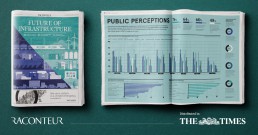
How we can help infrastructure organisations
At Curzon Consulting, we understand it’s about the destination and the journey.
We work with rail, road and utilities organisations to deliver tangible results. Our award winning management consultants help our clients get where they need to be through:
- Digital Monetisation and Transformation
- Data Driven Decision Making
- Operating Model Future Proofing
- Value Enhancing Strategies
Visit our infrastructure page or contact our Infrastructure Lead, Nigel Brannan, to find out more
Download ‘Future of Infrastructure 2020’ report from Raconteur, The Times
CONTACT US TO FIND OUT HOW WE CAN HELP
Chairman's Masterclass: "Net Zero - the journey so far and options ahead"
Event: Net Zero - the journey so far and the options ahead12 February 2020, London
Event details
Where: Central London
When: 7pm-10pm, 12 February 2020
What: Dinner, Speech from National Grid Executive Director UK, Nicola Shaw CBE
About the speaker
Our guest speaker, Nicola Shaw CBE, will be discussing the journey to net zero carbon emissions
Nicola Shaw was educated at both Oxford University, where she studied for a bachelor’s degree in History and Economics, and the Massachusetts Institute of Technology (MIT), where she received a master’s in Transportation.
Nicola has served in senior management roles, as Chief Executive Officer of HS1 and Managing Director of UK Business Division at FirstGroup plc. She was also an independent Non-executive Director of Ellevio AB and Aer Lingus Group plc.
Nicola’s career, in the UK and overseas, has included senior positions in several regulatory, commercial and operational roles. She has a strong leadership track record, including Chief Executive Officer of HS1 and Managing Director of the UK Business Division at FirstGroup plc.
Who should attend?
The Chairman’s Masterclass Dinner Series is a forum for senior business to discuss topical issues under Chatham House Rules.
Typical attendees include Chief Executive Officers, Chief Financial Officers, Chief Commercial Officers, Chief Strategy and Transformation Officers, Managing Directors and business unit Directors.
Register your interest to attend this event in London, UK.
Please note that spaces are limited.
This is the latest event in our Chairman’s Masterclass Dinner series, providing UK business leaders with insight for over a decade.


